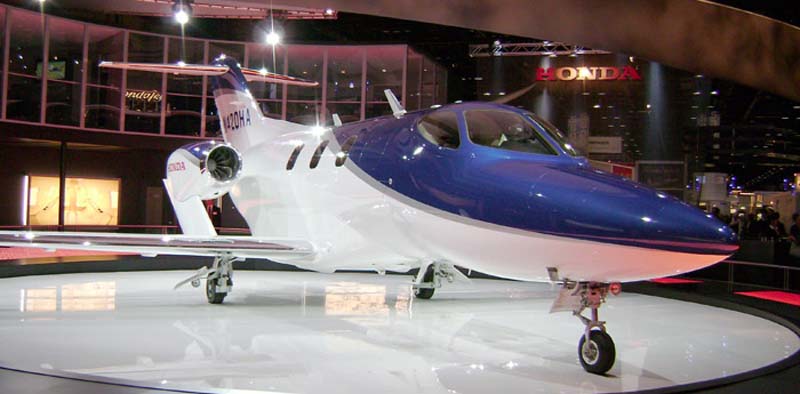| Honda | ||||||||||||||||||||
|
HA-420 Hondajet |
||||||||||||||||||||
 |
||||||||||||||||||||
|
Photo: Robert Deering 10/6/2008 Orange County Convention Center Orlando, Florida |
||||||||||||||||||||
|
The Honda HA-420 HondaJet is the first general aviation aircraft developed by the Honda Motor Company. It first flew in 2003 and is classified as a Very Light Jet (VLJ). The Hondajet will acommodate as many as 6 passengers with a crew of 2. Honda decided to go with an unusual over-the-wing podded engine configuration. This feature was developed on the innovative Vereinigte Flugtechnische Werke VFW-614 decades earlier. It allows for more space within the fuselage and reduces drag at high speeds. The fuselage itself is made from lightweight composite materials. The wings are made from structurally reinforced single sheets of aluminum. The use of a single sheet allows for a smoother surface than more conventional methods. Design testing on wing shape and design were completed on a T-33 Shooting Star, modified by AVTEL Services, Inc., and flight tested at the Mojave Airport. Honda began developing its own small turbofan engine, the HF118, in 1999. This led to the HF120, developed with GE Aviation under the GE-Honda partnership. The HF120 was test-flown both on a Cessna Citation and a modified Boeing 727-100. The engine features a single fan, a two-stage compressor and a two-stage turbine. Honda claims that the combination of lightweight materials, aerodynamics and efficient engines gives the HondaJet as much as 35% higher fuel efficiency than similar aircraft. The aircraft is equipped with a touchscreen 3-display Garmin G3000 glass cockpit system. The aircraft will be produced at the Piedmont Triad International Airport, Greensboro, North Carolina, USA. The plant for making the aircraft was completed in late 2011 and production of the HA-420 began in October, 2012. Expectations are that 70 to 100 planes will be sold per year. |
||||||||||||||||||||
|
||||||||||||||||||||